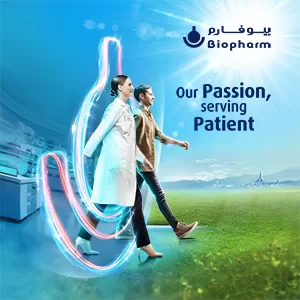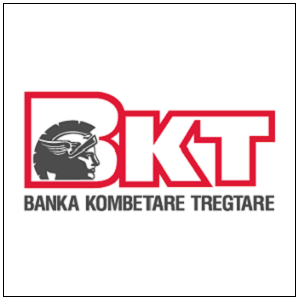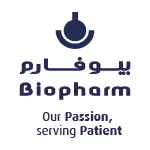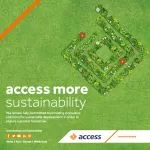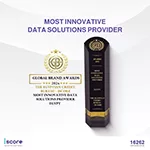Resources
The End of Animal Testing? Why Brands Must Embrace Compassion in Product Development

- Testing on animals is being challenged not just from a scientific angle but from an ethical one.
- A global wave of regulations, changes in consumer awareness, and progress in technology accelerate change.
If you’ve ever paused to check whether a product is cruelty-free, you’re part of a growing global conversation. More and more people are asking about the link between their purchases and their values, especially when animals are concerned.
For a good few decades, the animal-test kind of paradigm was the norm. Rabbits were used to assess chemical effects on the eyes. Nowadays, tests on mice and monkeys consist of administering toxic substances to determine whether the same substances could be deleterious to humans. Well, it is one of those things – if anything were to be done, it would be believed to be the least unfortunate.
The matter is now under challenge. The rise of public awareness has simultaneously increased ethical concern. People ask themselves: Should it be true that millions of animals suffer so that those animals may be easy on our skin or shampoo?
In the UK alone, more than 2.7 million scientific procedures involving animals were recorded in 2022. That figure includes both experimental testing and the breeding of genetically modified animals. Globally, the total likely exceeds 100 million, though reliable worldwide data is hard to consolidate. Either way, the scale is hard to ignore.
These aren’t statistics. These are lives. And many people are no longer comfortable turning a blind eye.
Consumers Are Choosing Compassion
Talk to someone who’s gone vegan or shifted to cruelty-free products, and you’ll hear a common story. They didn’t want their everyday habits—like brushing their teeth or applying lotion—to come at the cost of animal suffering.
Veganism is on the rise in the UK and worldwide. According to The Vegan Society, the number of vegans in Britain grew from 150,000 in 2014 to over 600,000 by 2019. While that reflects a fourfold increase over five years, growth estimates vary based on methodology and timeframe. Nonetheless, the trend is substantial and persistent.
In the U.S., ethical consumerism is also growing. While exact numbers vary, surveys suggest that a significant portion of adults actively avoid animal products or choose cruelty-free alternatives when available. While identifying a precise “nearly a third” figure is difficult due to differing survey methods and definitions, the general trend toward ethical choices is well documented.
A number often cited from market research—including from previous Mintel reports—indicates that a majority of millennial consumers in the UK consider cruelty-free certification important. Many are even willing to pay more for products that align with their values. While exact percentages from a 2024 Mintel survey were not verifiable at the time of writing, earlier data support the notion that these preferences are strong and increasing.
This is about more than lifestyle. It’s about identity. For a growing number of people, choosing compassionate products is part of who they are.
Global Regulations Are Changing
As public opinion shifts, lawmakers are starting to follow.
In the EU, animal testing for cosmetic products and ingredients was banned in 2013. In 2021, the European Parliament called for a comprehensive plan to phase out all animal testing across industries, encouraging the adoption of human-relevant scientific methods.
In the United States, the FDA Modernisation Act 2.0, passed in 2022, marked a major turning point. For decades, new drug candidates had to be tested on animals before advancing to human trials. Now, drug manufacturers can submit data from non-animal alternatives instead.
In China, where animal testing for cosmetics was long a barrier to cruelty-free trade, the rules changed in 2021. While “special use” products like hair dyes and sunscreens still require tests under specific conditions, “general” imported cosmetics can now bypass animal testing if they meet safety documentation requirements and other criteria. The door is open, though not without limitations.
Other countries—including India, Israel, Norway, and Australia—have also implemented full or partial bans on animal testing for cosmetics. The momentum is real, even if regulations vary by region.
Big Brands Are Responding
When large multinational companies start making changes, it’s often a signal that deeper shifts are underway.
Unilever has eliminated animal testing in 99% of its product formulations. The company has invested heavily in alternative research and continues to collaborate with academic and industry partners to validate non-animal methods.
L’Oréal, one of the world’s largest cosmetics manufacturers, developed Episkin—an advanced model of reconstructed human skin—which is now used globally to test for skin reactions. The company banned animal testing on finished products in 1989 and ceased testing ingredients in 2009.
The Body Shop has remained committed to cruelty-free practices and has used its platform to campaign for international bans on cosmetic animal testing. It was also the first global beauty brand to be certified by Cruelty Free International under the Leaping Bunny standard.
Procter & Gamble has reportedly invested over $480 million in the development of non-animal testing alternatives and continues to work closely with advocacy groups and scientists around the world.
These actions aren’t just symbolic. They’re backed by money, science, and policy. The industry is changing, and these companies are helping lead the way.
The Problem with Animal Testing
Beyond the ethical debate, there’s also a scientific one. Simply put, animals often aren’t reliable models for human biology.
More than 90% of drugs that pass animal testing fail in human clinical trials. Some fail due to toxicity that didn’t appear in animal tests. Others fail because they just don’t work as expected in people. Rodents and primates have different metabolisms, immune systems, and gene expression patterns.
So while animal testing might seem like a protective step, it can give a false sense of security or false red flags.
This contributes to high costs and long timelines in product development. Worse, it means treatments that could help humans might be delayed or discarded based on irrelevant animal data.
A Look at the Alternatives
The good news is that science has evolved. There are now credible, validated alternatives that do not involve harming animals, and they often perform better.
In Vitro Testing
This technique uses human cells and tissues to assess how products interact with the body. It’s widely used for evaluating skin and eye irritation, as well as for testing toxicity.
L’Oréal’s Episkin is a leading example of this approach and has been accepted by regulatory bodies around the world.
Organ-on-a-Chip
These micro-engineered devices simulate the structure and function of human organs. They’re capable of mimicking the behaviour of lungs, livers, kidneys, and more.
Companies like Emulate are already working with pharmaceutical giants such as Pfizer and Merck to use liver-on-a-chip technology during early-stage drug testing.
Computer Modelling and AI
Machine learning and big data can now be used to predict how chemicals and drugs might behave in the human body. These models learn from thousands of existing data points to improve over time.
Insilico Medicine used AI to identify a fibrosis drug candidate in under two years—a process that would have taken significantly longer using conventional approaches.
Human Microdosing
An extremely small dose of a new drug is administered in so-called phase 0 trials, and the pharmacokinetics can then be studied. It avoids animal studies upfront but provides real human data early on in development.
These alternatives aren’t just kinder. They’re increasingly seen as more relevant and efficient.
Support from the Scientific Community
The scientific establishment is not only open to non-animal methods—it’s actively supporting them.
In the EU, EURL ECVAM (European Union Reference Laboratory for alternatives to animal testing) continues to validate and promote alternatives. In the US, the National Institutes of Health funds multiple initiatives focused on technologies like organ-on-a-chip.
Tox21—a collaboration between the EPA, FDA, NIH, and others—aims to create a comprehensive map of chemical toxicity using non-animal methods.
While it’s difficult to isolate an exact global investment figure for ethical testing tools, billions have flowed into biotech startups and academic research focused on animal-free science. Investment is significant, even if not uniformly tracked.
Where the Industry Is Going
Reports suggest that cruelty-free product launches are increasing each year. While some of the numbers vary by region, the direction is consistent.
Major retailers like Sephora, Ulta, and Boots are dedicating more shelf space to cruelty-free and vegan beauty lines. Supermarkets and drugstores are increasingly labelling products for ethical shoppers.
This isn’t just marketing. It reflects real shifts in production, regulation, and consumer priorities.
Veganism and the Cruelty-Free Lifestyle
Veganism today extends far beyond food. It’s about the total impact we have on animals, the planet, and future generations.
The vegan cosmetics market alone is projected to grow significantly in the coming years, with estimates ranging from $21 billion to nearly $25 billion by 2028. These projections differ slightly depending on the reporting agency, but all point toward strong growth.
Gen Z, often the most vocal generation when it comes to ethics and sustainability, is driving much of this demand. While some reports suggest that 44% of Gen Z shoppers seek cruelty-free certification, exact numbers vary depending on methodology and regional sample sizes. Still, the overall trend is clear: younger consumers want transparency and compassion in the products they buy.
A New Global Standard
The idea that cruelty-free is an exception is fading fast. It’s becoming a baseline expectation.
Governments are aligning their regulations. Scientific communities are sharing data and validating non-animal methods across borders. And brands are increasingly moving not just because they’re told to, but because their customers demand it.
In a global market, compassion travels quickly.
The Future Is Humane
We’ve reached a point where technology and empathy no longer have to compete. We can be scientifically advanced and ethically responsible at the same time.
Animal testing doesn’t reflect where society is going. It’s being outpaced by smarter, safer, and more compassionate approaches.
We have the tools. We have the data. And we have the will.
The question now isn’t whether we can move on from animal testing—it’s how quickly we will.











